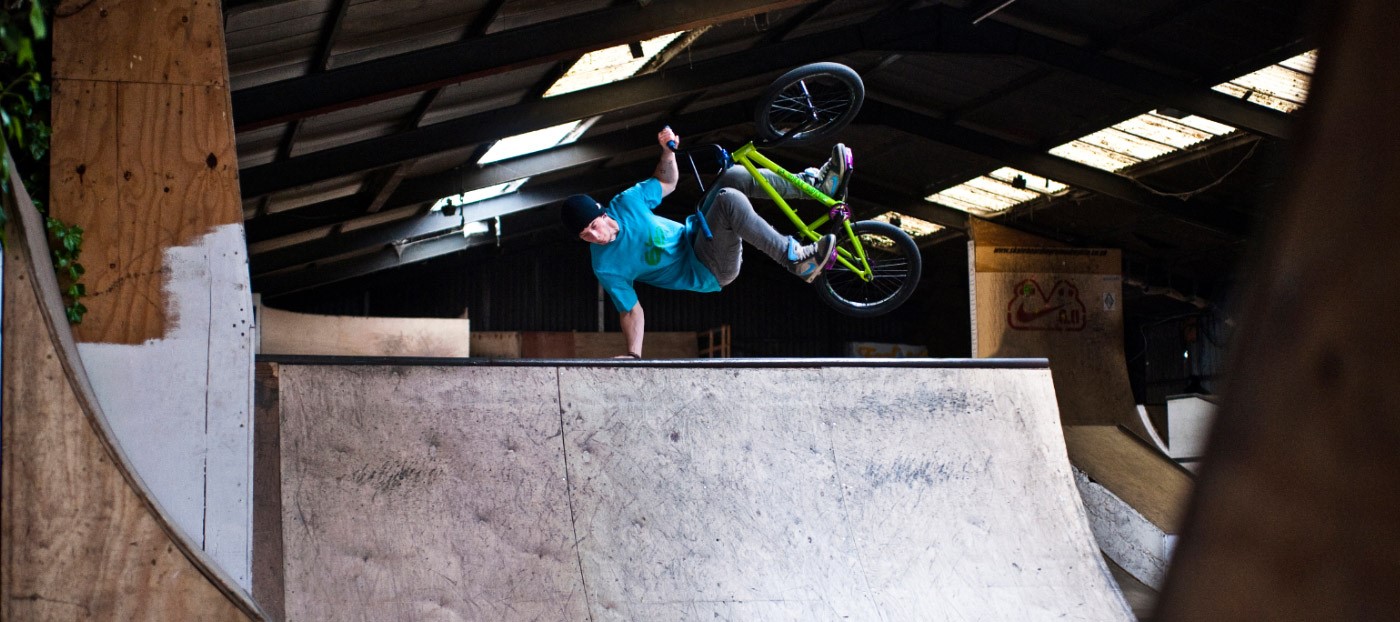BMX, short for Bicycle Motocross, first made an appearance in the early 1970s and by the early 1980s had become a global phenomenon. Originally a racing format, the BMX name now encompasses a number of different riding styles which all use variations of the familiar small bike design.
Different styles of BMX
Race Back to top
Designed to be ridden at speed around specially designed circuits. Race BMX’s have lightweight Aluminium frames, larger diameter sprockets, smooth & narrow tyres and typically have longer top tubes to make them more stable over long, fast jumps. They’re not designed to be ridden with stunt pegs or gyro headsets and aren’t as strong & tough as bikes designed for tricks.

Freestyle
The frames on freestyle BMX’s are almost always made from Steel, making them strong and tough enough to withstand hard impacts Concrete landings. It’s common to see these bikes fitted with stunt pegs and a gyro headset, the latter allows the handlebars to rotate 360° without tangling the brake cables. The chainring is smaller and the tyres are wider than those on a race bike.
Although the bikes are generally quite similar, freestyle BMX can be divided into several sub-categories, each with their own distinct types of riding. These are:
Park / Street

Concrete landings with little or no transitions and often complex sequences of tricks. Street riding can be very punishing on a BMX, so they need to be strong and tough, yet agile enough to complete complex manoeuvres. Tyres are very smooth, if not totally slick. Park & Street BMX’s often just a rear brake with a gyro headset, although some riders prefer to run without brakes at all.

Vert (AKA Ramp, Half-pipe)
High speed riding on specially built, smooth, U-shaped ramps with very tall sides. This is where riders perform their most impressive, and most dangerous tricks. Much like a street BMX, vert BMX’s will have strong steel frames, smooth tyres and stunt pegs, but will often be ridden without brakes and usually have a larger sprocket for faster speeds and higher jumps.
Dirt Jump
This style involves riding over a series of jumps dug out of the track. When ridden over with confidence, these jumps create a smooth, rhythmic riding style with a mix of high jumps and long, fast jumps. Jump BMX’s have strong, steel frames, tyres with a knobbly tread pattern, large chainrings and at least one brake fitted - usually the rear with an gyro headset. Jump bikes usually don’t have stunt pegs on them unless they’re fitted to allow a specific trick to be performed in the air.
Flatland
An intricate style of riding carried out on open areas of land, involving very complex & precise balancing techniques on the bike. Freestyle BMX bikes are characterized by short & stiff frames made from steel, small sprockets, smooth tyres and front & rear stunt pegs, depending on the rider’s personal preference.

